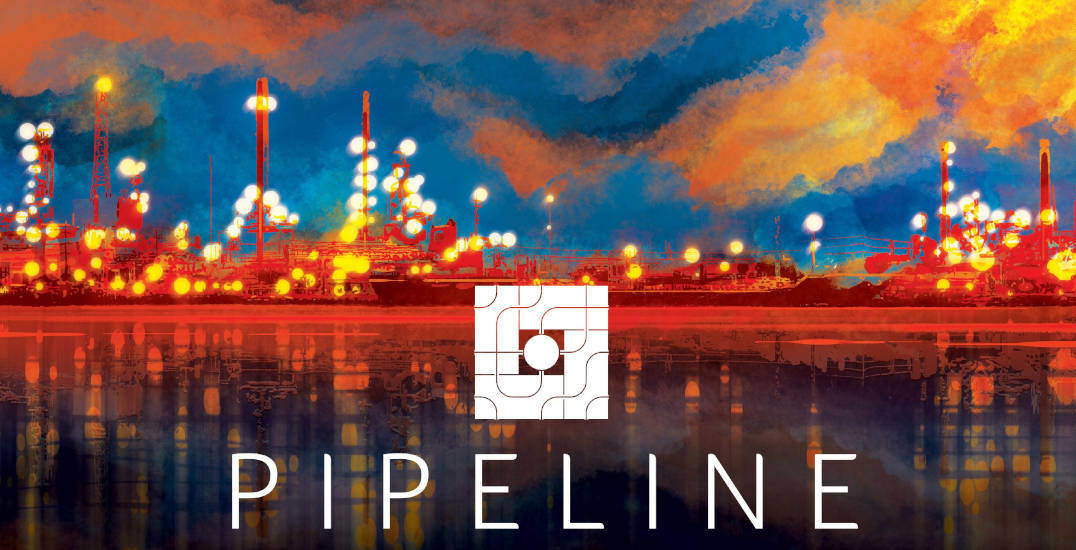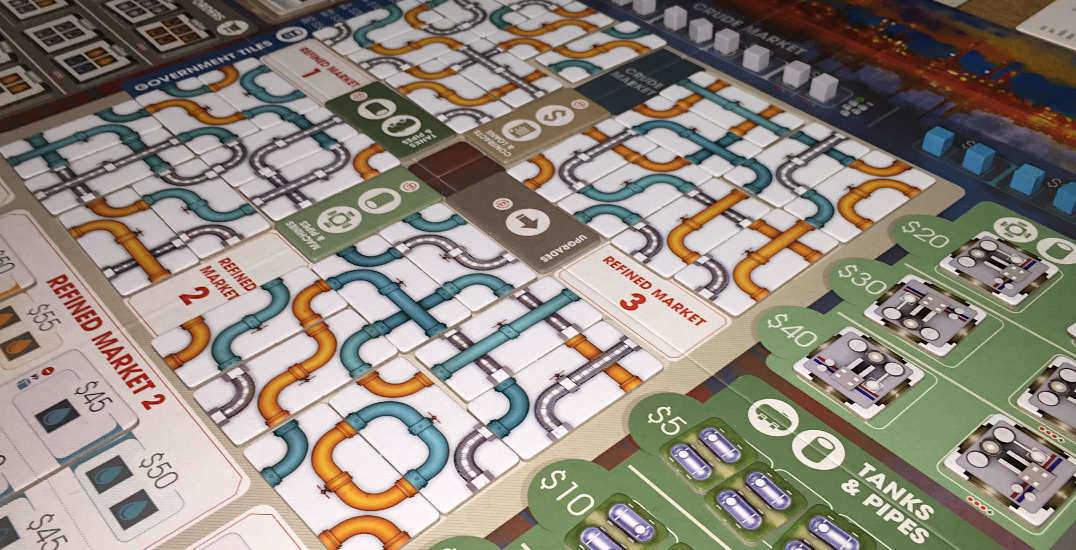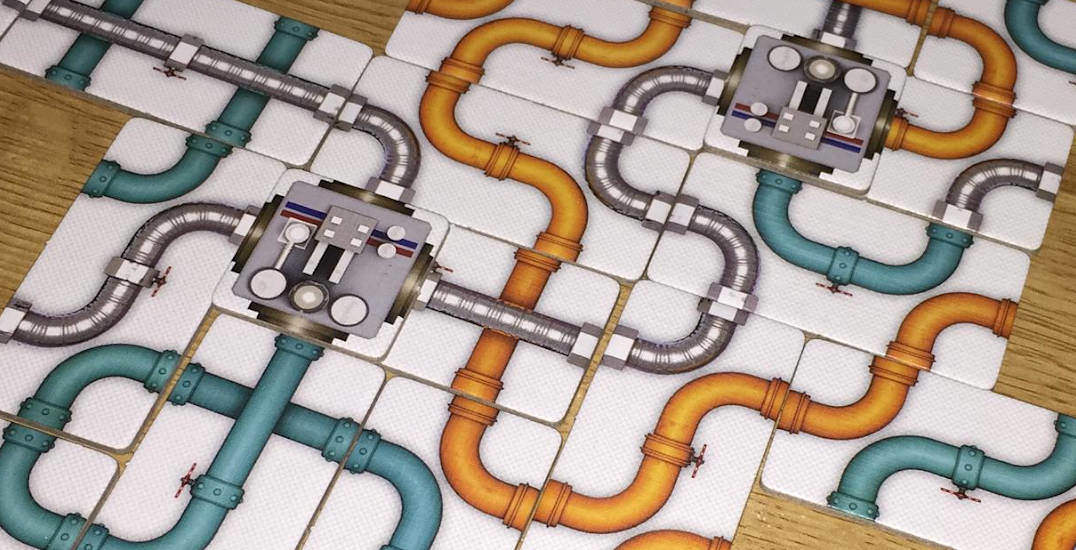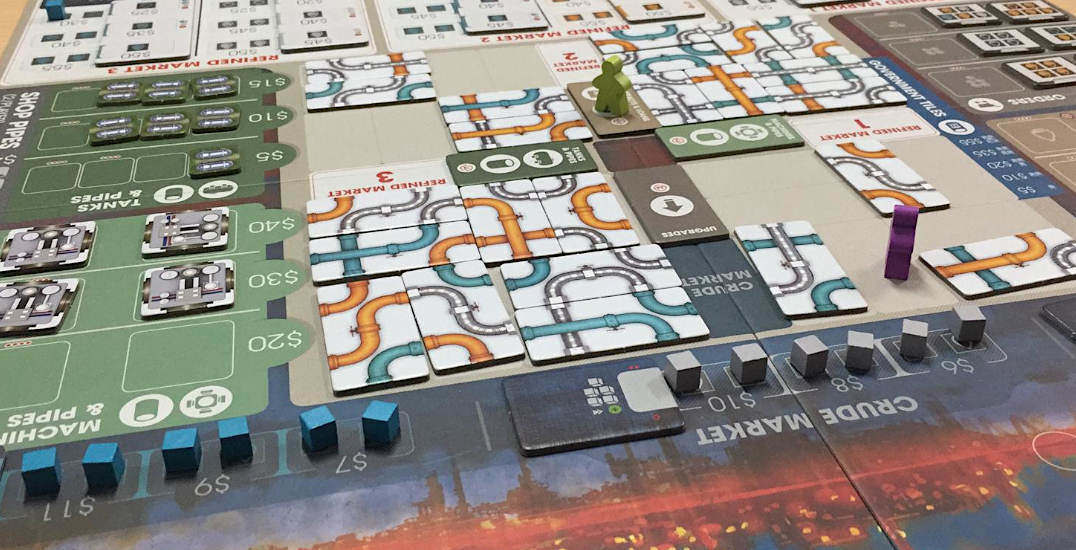
I did not expect to like Pipeline. Games that mix elements from economic and baroque eurogames have always felt like a compromise to me. But building an oil refinery was an appealing topic and the challenge ended up grabbing me.
PROCESSING
Pipeline is very simple. Each turn you take exactly one action, and another if you pay 10 extra dollars. You may trade oil, purchase machinery and storage tanks or buy the necessary pipes to process crude. After a set of turns and tallying up some bonuses, whoever has made the most money wins.
Oil is processed by building pipes of a certain length. But since the pipe pieces come in mangled shapes of three different colours, getting the right pieces to distill each type of oil can be a challenge. You have to contort your mind and try to get the right ones, as inefficiency is heavily punished.

I’m not very fond of this mechanism. It’s not an element that generates decisions. Rather, it’s a calculation exercise. You have to look at all available tiles, visualize them in your mind and then optimize the best possible layout. And then, when you are done, you have to do it again, lest someone take valuable tiles from you.
I’m not a slow player. Years of playing in tournaments have pushed me to play much faster than the average. But I can’t play Pipeline at a good pace. It’s too important to visualize and plan your pipes ahead. Most of the time, I move on, not because I’m done thinking but because the social contract demands I don’t take 15 to 20 minutes staring at the board.
It seems to me how adept a player is at spatial visualization will determine how much they’ll enjoy the game. If you are good at it, you’ll quickly assemble tiles and move to more strategically fruitful areas of the game. On the other hand, if you need to take the tiles and rotate them to see how they fit, not only will your game take ages to play, you are never going to win and probably not even enjoy it.
DIVIDER
It would, however, be a mistake to dismiss the mechanism outright. This is a well-made game and there are strategic implications to the pipes. There’s some balance to be had between the long and short term and I’m particularly fond of a vital upgrade, simply called “machines”.

Machines are small tiles that automatically run all pipes connected to them. They effectively double or triple the number of actions available in the game and can produce ridiculous amounts of profit if provided with the tools to do so. They are a reward for a well-optimized network and a massive source of disappointment for a shoddily built one. Trying to get two or three machines running is what gets me back to the game.
Still, I cannot, in good conscience, claim it isn’t the low point of the design. I enjoy the game, perhaps not enough to buy it, but enough to seek it out and try to play it. But compared to other economic games, like Brass it falls short. There are good things about it, but the bad part of the game is its distinctive point, its core mechanism.
The lack of meaningful player interaction and overt focus on efficiency also put a hard limit on what it can achieve. I like the loans, the extremely limited actions available to the player and how the game opens up with better play. Elements that don’t seem important at first, like contracts and deliveries become vital as you improve your skills. But all that is gated behind a dull calculation exercise I wish I could do without.
ART
The game is finished with a pretty remarkable art direction that sells an otherwise dull topic. Make no mistake, these kinds of path-based, technical games are difficult to translate into a board. Many games have tried, and they tend to look like a mess. That Pipeline can even be considered pretty is an achievement. If they ever remake Lehman’s Time Agent, I hope they get Ian O’Toole to do it.

All in all, I find myself with a drive to go back to Pipeline, but not one that will last. I want to crack the puzzle, learn the precise steps to get my economy rolling and develop a highly-automated refinery. But I also know that once I do, the game will be over for me.
| PIPELINE (2019) | |||
|---|---|---|---|
| GAME DESIGN | Ryan Courtney | ||
| ART | Ian O’Toole | ||
| NUMBER OF PLAYERS | 2-4 (Best with 3-4) | LENGTH | 75-100 Minutes |



